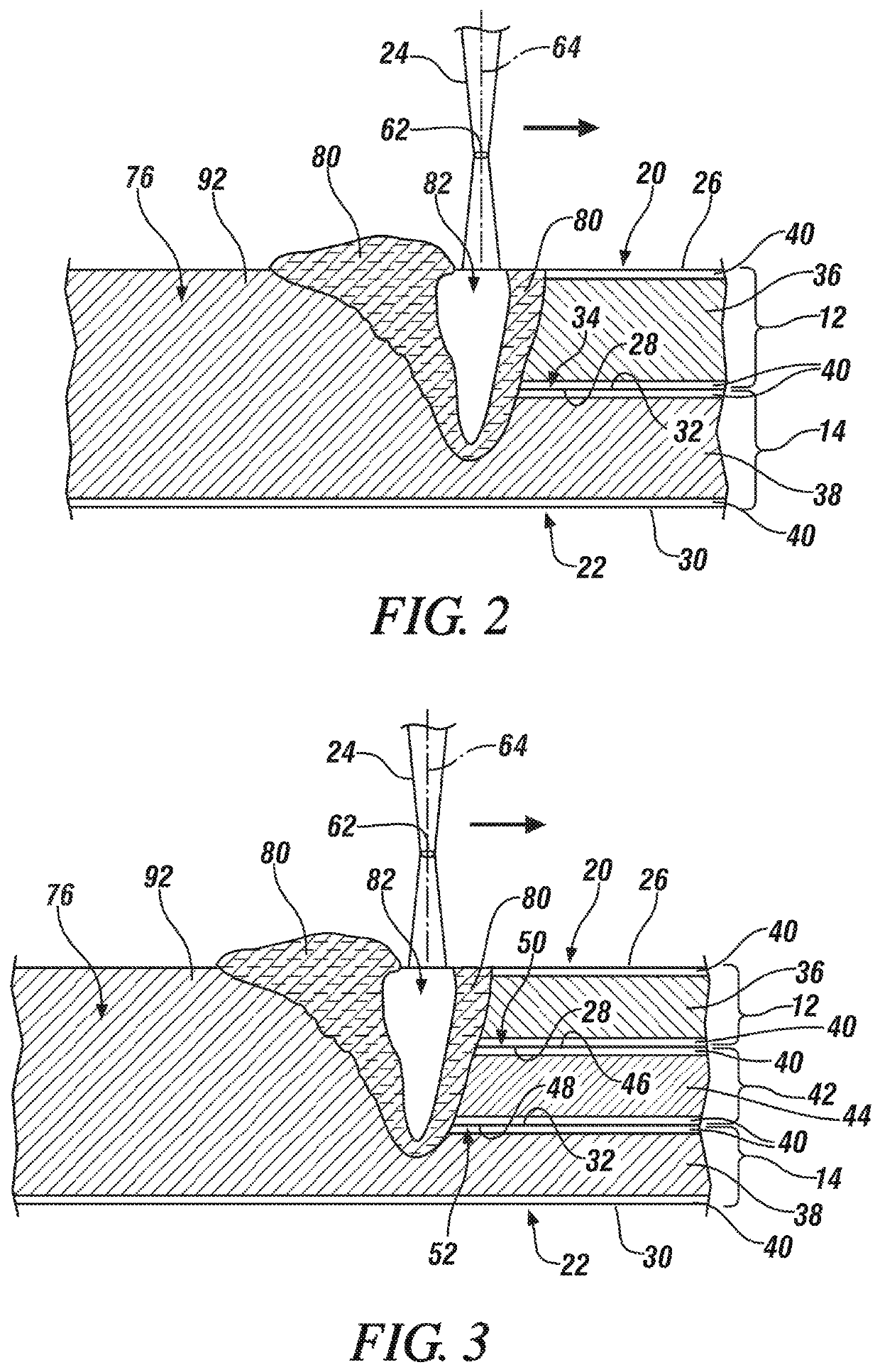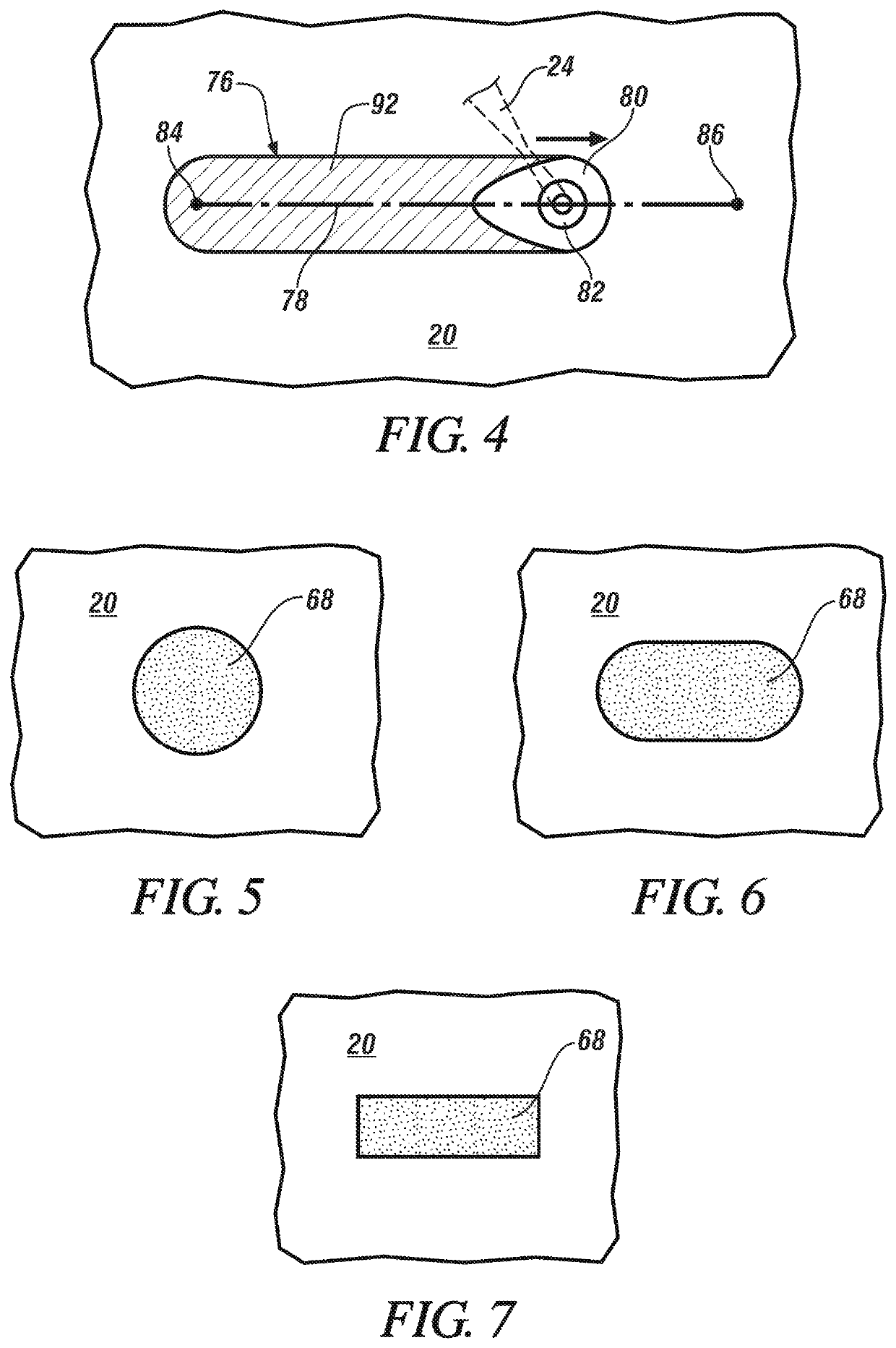Remote laser welding of overlapping metal workpieces at fast speeds
a laser welding and metal workpiece technology, applied in welding/soldering/cutting articles, manufacturing tools, transportation and packaging, etc., can solve the problems of degrading the mechanical properties of the weld joint, affecting the welding effect, so as to enhance the strength of the resultant laser weld joint, improve the effect of disturban
- Summary
- Abstract
- Description
- Claims
- Application Information
AI Technical Summary
Benefits of technology
Problems solved by technology
Method used
Image
Examples
Embodiment Construction
[0027]The disclosed method of laser welding a workpiece stack-up comprised of two or more overlapping metal workpieces calls for advancing a laser beam relative to a plane of a top surface of the workpiece stack-up along a beam travel pattern at a high beam travel speed of greater than 8 m / min, and more preferably greater than 12 m / min, while maintaining a penetrating keyhole. The laser beam may be a solid-state laser beam or a gas laser beam depending on a variety of factors including, among others, the characteristics of the metal workpieces being joined. Some notable solid-state lasers that may be used are a fiber laser, a disk laser, a direct diode laser, and a Nd:YAG laser, and a notable gas laser that may be used is a CO2 laser, although other types of lasers may certainly be used so long as they are able to create the keyhole and surrounding molten weld pool. Due to the high laser beam travel speeds employed and the possible geometric complexity of the beam travel pattern tra...
PUM
| Property | Measurement | Unit |
|---|---|---|
| power | aaaaa | aaaaa |
| focal length | aaaaa | aaaaa |
| focal length | aaaaa | aaaaa |
Abstract
Description
Claims
Application Information
 Login to View More
Login to View More - R&D
- Intellectual Property
- Life Sciences
- Materials
- Tech Scout
- Unparalleled Data Quality
- Higher Quality Content
- 60% Fewer Hallucinations
Browse by: Latest US Patents, China's latest patents, Technical Efficacy Thesaurus, Application Domain, Technology Topic, Popular Technical Reports.
© 2025 PatSnap. All rights reserved.Legal|Privacy policy|Modern Slavery Act Transparency Statement|Sitemap|About US| Contact US: help@patsnap.com



